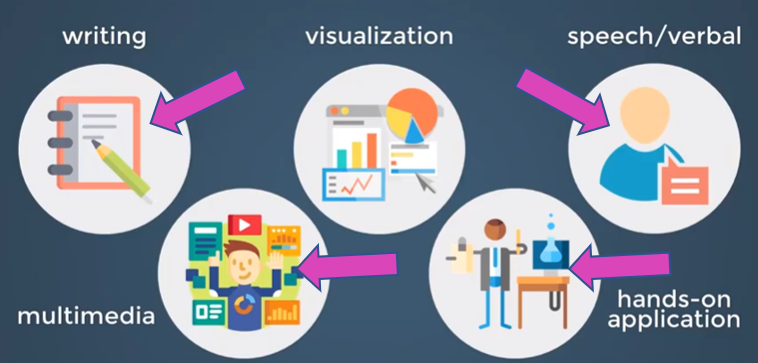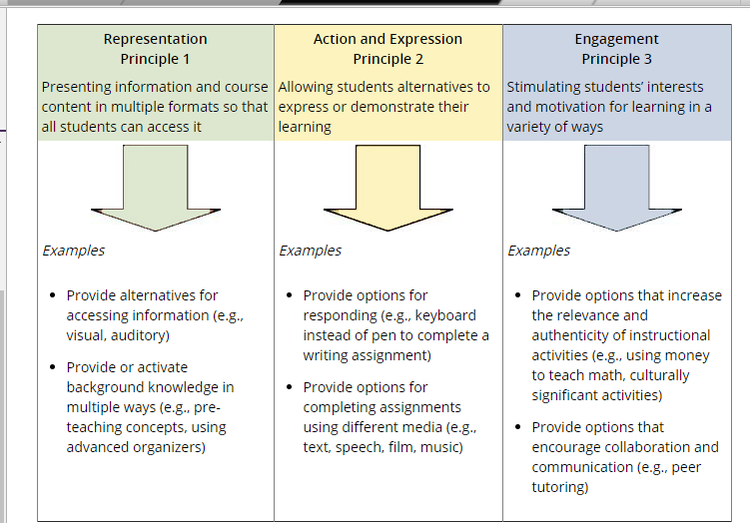I chose to look at the blogs of D.Y. as I have enjoyed looking at her blogs and threaded conversations previously in the program. In her March 4 blog, she shared very candidly about some of her struggles with the workload of the 21st Century learner program especially the reading assignments at the onset of the program. “And yes, the first two weeks of the class were a bit challenging. Seeing more than half the students “drop out” was concerning but Dr. K came in and assured us that this experience would be well worth it, and she was right! So my feelings absolutely changed throughout the 7 weeks of instruction, all for the better.” She spoke about how Dr. K was able to step and ease her mind and offer assurance that the time spent working on this course was going to be well worth it. So later in the post D shared about how Dr. K was able to help her feel better and she was able to overcome her anxiety as a result: “Instead of my goal being about the grade, it was truly about the process with little worries about being “dinged” for having that change in focus.” In her April 15 blog she spoke of how she has become a fan of using discussion boards and how those helped her with the 21st Century learner program. She also, in the same post, spoke of how she enjoys working with Padlet and she shared information about how to use that application. She liked both the discussion boards and Padlet so much that she incorporated both into her demo unit.
To summarize D’s growth: 1) she came to appreciate discussion boards and incorporated them into her demo unit, 2) she learned about Padlet and all it can do and again, she incorporated that into her demo unit and 3) she was able, with Dr. K’s help, to overcome her anxiety and really engage with the course authentically and not just for the grade.
I also checked out K.K.’s blog posts because she actually works in the same district that I do. In her March 13 post she states: ”I have used Canvas as a student and compared to Blackboard I found it more engaging. Using this trimester as a resource to explore UDL and what to put in a class was great. Now to use it as an LMS, I have some thoughtful responses.” She discovered that she prefers Canvas over Blackboard and she’s begun to use that in her practice. In her March 14 post she wrote of her experiences and anxiety over transitioning to virtual instruction. She shared what she didn’t know and how this 21st Century learner program helped her: “In August I did not really know there was a theory of education involving constructivism; let alone Vygotsky. In August I did not even consider it teaching if I was not face to face; let alone students engaging with technology. In August I would have not even read the article, because the classroom and teaching live and in person was the only way I believed education would sustain itself. The pandemic is now 1 year old and I am a virtual educator. My growth and development have never been so accelerated, so magnified, and so needed for survival.” In a second March 14 post, K shared a moving account of her battle with self to not quit the 21st Century program. “I thought I would quit this program because there was no economic necessity. But what became evident, what became authentic, was I needed this class to move myself forward, to heal, to breath, to accept. I needed a teacher not to pass me, not to give me an A, or to allow me to quit but to return me to me.” Instead she chose to finish the program and return to her high standards of being a student. In the process she gained powerful new insights into her students: “I never saw student’s in this way. I thought students they [were] either lazy, not motivated or unable. I never thought students were just surviving in the moment.” I gained some powerful insights into my students this year too. One of them witnessed his father attempt suicide right at home then went through a back surgery to fix a football injury. Had this kid not shared this with me after I inquired about how I can help him succeed in the class, I’d never have known what he was going through. K’s eloquent phrase “I never thought students were just surviving in the moment” is so powerful and should remind us all that we don’t know what our students are going through in their personal lives, especially this last year. Really important, transformative stuff right there!
So in summary, K.K.’s growth included 1) coming to appreciate Canvas over Blackboard and she’s begun to use Canvas in her classroom, 2) successfully transitioning from an in-person instructor to a virtual instructor, 3) fighting herself to not quit the program in the aftermath of losing her father and 4) gaining new insights into her students.
To summarize D’s growth: 1) she came to appreciate discussion boards and incorporated them into her demo unit, 2) she learned about Padlet and all it can do and again, she incorporated that into her demo unit and 3) she was able, with Dr. K’s help, to overcome her anxiety and really engage with the course authentically and not just for the grade.
I also checked out K.K.’s blog posts because she actually works in the same district that I do. In her March 13 post she states: ”I have used Canvas as a student and compared to Blackboard I found it more engaging. Using this trimester as a resource to explore UDL and what to put in a class was great. Now to use it as an LMS, I have some thoughtful responses.” She discovered that she prefers Canvas over Blackboard and she’s begun to use that in her practice. In her March 14 post she wrote of her experiences and anxiety over transitioning to virtual instruction. She shared what she didn’t know and how this 21st Century learner program helped her: “In August I did not really know there was a theory of education involving constructivism; let alone Vygotsky. In August I did not even consider it teaching if I was not face to face; let alone students engaging with technology. In August I would have not even read the article, because the classroom and teaching live and in person was the only way I believed education would sustain itself. The pandemic is now 1 year old and I am a virtual educator. My growth and development have never been so accelerated, so magnified, and so needed for survival.” In a second March 14 post, K shared a moving account of her battle with self to not quit the 21st Century program. “I thought I would quit this program because there was no economic necessity. But what became evident, what became authentic, was I needed this class to move myself forward, to heal, to breath, to accept. I needed a teacher not to pass me, not to give me an A, or to allow me to quit but to return me to me.” Instead she chose to finish the program and return to her high standards of being a student. In the process she gained powerful new insights into her students: “I never saw student’s in this way. I thought students they [were] either lazy, not motivated or unable. I never thought students were just surviving in the moment.” I gained some powerful insights into my students this year too. One of them witnessed his father attempt suicide right at home then went through a back surgery to fix a football injury. Had this kid not shared this with me after I inquired about how I can help him succeed in the class, I’d never have known what he was going through. K’s eloquent phrase “I never thought students were just surviving in the moment” is so powerful and should remind us all that we don’t know what our students are going through in their personal lives, especially this last year. Really important, transformative stuff right there!
So in summary, K.K.’s growth included 1) coming to appreciate Canvas over Blackboard and she’s begun to use Canvas in her classroom, 2) successfully transitioning from an in-person instructor to a virtual instructor, 3) fighting herself to not quit the program in the aftermath of losing her father and 4) gaining new insights into her students.


 RSS Feed
RSS Feed
